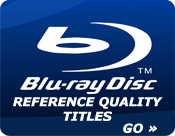
|
 |
|
|
| View previous topic :: View next topic |
| Author |
Message |
cmjohnson
Joined: 03 Apr 2006
Posts: 5180
Location: Buried under G90s

|
 Link Posted: Mon Jan 23, 2017 11:30 pm Post subject: Activated charcoal to filter yellowed glycol? Link Posted: Mon Jan 23, 2017 11:30 pm Post subject: Activated charcoal to filter yellowed glycol? |
 |
|
I've got more than a gallon of slightly yellow tinted, but clear, not cloudy, used glycol that I'd rather filter and reuse than
send off to recycle as used antifreeze.
Does anyone have any idea if maybe this stuff can be filtered back to full colorless clarity with an activated charcoal filtration system? Has anyone ever tried it?
I did some searching on this and it appears that the way to go is to process the contaminated glycol in two stages, one with activated carbon (charcoal) and two with activated alumina, which is the commonly available white nodular dessicant.
I may try it.
|
|
| Back to top |
|
 |
Tim in Phoenix
Joined: 21 Oct 2006
Posts: 4379
Location: Phoenix

|
 Link Posted: Wed Jan 25, 2017 2:32 am Post subject: Link Posted: Wed Jan 25, 2017 2:32 am Post subject: |
 |
|
Tough call
Carbon filtering is a method of filtering that uses a bed of activated carbon to remove contaminants and impurities, using chemical adsorption.
Each particle/granule of carbon provides a large surface area/pore structure, allowing contaminants the maximum possible exposure to the active sites within the filter media. One pound (454 g) of activated carbon contains a surface area of approximately 100 acres (40 Hectares).
Activated carbon works via a process called adsorption, whereby pollutant molecules in the fluid to be treated are trapped inside the pore structure of the carbon substrate. Carbon filtering is commonly used for water purification, in air purifiers and industrial gas processing, for example the removal of siloxanes and hydrogen sulfide from biogas. It is also used in a number of other applications, including respirator masks, the purification of sugarcane and in the recovery of precious metals, especially gold. It is also used in cigarette filters.
Active charcoal carbon filters are most effective at removing chlorine, sediment, volatile organic compounds (VOCs), taste and odor from water. They are not effective at removing minerals, salts, and dissolved inorganic compounds.
Typical particle sizes that can be removed by carbon filters range from 0.5 to 50 micrometres. The particle size will be used as part of the filter description. The efficacy of a carbon filter is also based upon the flow rate regulation. When the water is allowed to flow through the filter at a slower rate, the contaminants are exposed to the filter media for a longer amount of time.
|
|
| Back to top |
|
 |
|
|
|
|
|
|
You cannot post new topics in this forum
You cannot reply to topics in this forum
You cannot edit your posts in this forum
You cannot delete your posts in this forum
You cannot vote in polls in this forum
You cannot attach files in this forum
You can download files in this forum
|
Forum powered by phpBB © phpBB Group
|
|








